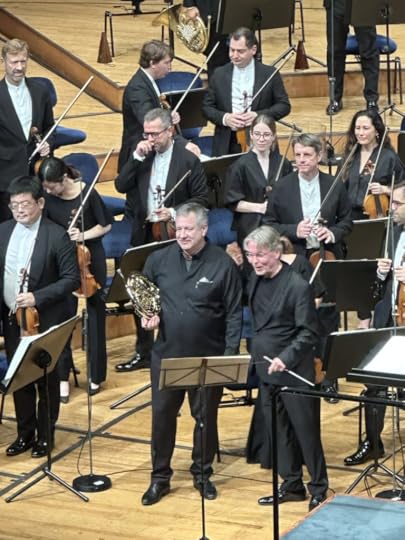Salonen with the Parisians in Lucerne

Big news this week: just after Esa-Pekka Salonen wrapped up his Lucerne Festival visit with the Orchestre de Paris, it was announced that he has been named the ensemble’s Chief Conductor starting in 2027. Parallel to that, he’ll become the take up the new Creativity and Innovation Chair of the Philharmonie de Paris. Salonen’s collaboration with the orchestra in Lucerne offered a vivid taste of that future partnership in two very different programs last weekend.
In the first, Augustin Hadelich was the soloist in an account of the Brahms concerto notable for its shadowed lyricism and spacious pacing, illuminating the score’s darker hues. Hadelich played his own cadenza and his arrangement of a Carlos Gardel tango as a steam-vent of an encore following such intensity. If Salonen brought structural clarity to the Brahms, the suite from Prokofiev’s ‘Romeo and Juliet’ that followed surged with dramatic sweep. The episodes seemed to unfold as part of an inexorable tragic arc rather than a set of contrasting miniatures.
His second evening with the Paris musicians revealed a touch more humor alongside the testosterone of ‘Don Juan’. But all that Straussian horn-iness set the stage for the much-anticipated world premiere of Salonen’s own Horn Concerto written for Berliner Philharmoniker principal Stefan Dohr. It’s a big piece, heroic in its way and abounding in the composer’s deep knowledge of the literature across music history, especially Mozart, Beethoven, and Bruckner (Salonen also trained as a horn player). He colorfully remarked that these moments from the musical past ‘appear and disappear like fish coming to the surface to catch an insect before diving to the depths of the sea again’.
The concerto teems with exposed solo passages that seem to test the limits of breath and control — not to mention imagination, indispensable to giving expressive shape to Salonen’s fertile ideas. Around the horn, the orchestra cast a kaleidoscope of refined colors. The concerto will travel widely in the coming months, so I hope to get a chance for more encounters.
Horn sounds resounded still again, sublimely, in the Sibelius Fifth. Salonen’s control of the art of transition, with subtly judged but dramatically thrilling accelerando, was a marvel. For all the monumentality of the closing chords, I fancied amid their awe an echo of mortality, like the trees being felled at the end of ‘The Cherry Orchard’. But the solace of Sibelius’s glorious Swan Theme circled in the mind’s ear as the swans on Lake Lucerne outside the KKL glided serenely by in serene silence.
Thomas May's Blog



